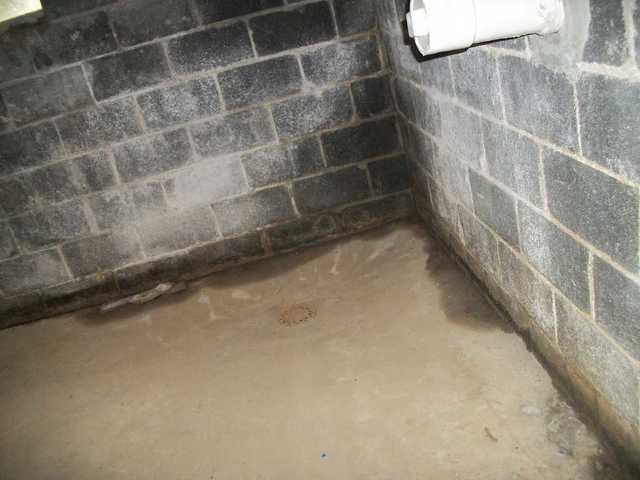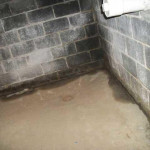Have you ever considered how a dry basement might influence your sleep? It’s not an immediate connection most people make, but a moisture-free basement can be a game changer for your restful nights. It improves the air quality, reducing allergens and other sleep disruptors. Plus, a well-sealed, dry basement cuts down on noise pollution, offering a more serene environment. And let’s not forget the peace of mind knowing your home’s structure is safe and sound. You might be surprised at how your sleep could improve. So, are you ready to discover how your basement could hold the key to better sleep?
Key Takeaways
- A dry basement reduces allergens and dampness, improving air quality for restful sleep.
- Regular maintenance, such as installing moisture barriers and cleaning dehumidifiers, keeps basements dry.
- Proper basement waterproofing and dehumidification strategies minimize moisture and prevent mold growth.
- A clean, well-organized basement fosters calmness and peace, improving sleep quality.
- Sealing basements properly reduces noise pollution, creating a tranquil sleep environment.
The Hidden Connection Between Basements and Sleep
Despite what you may think, the state of your basement can significantly impact your sleep quality. Ever considered how basement organization can play a role in your slumber? A cluttered, disorganized basement can create an underlying sense of chaos and stress, disrupting your restful ambiance and leading to less quality sleep.
Imagine descending into a well-organized basement, where everything has a place, it’s neat, tidy, and inviting. This clean, orderly environment starts to influence your state of mind, fostering a sense of calm and peace – essential ingredients for a good night’s sleep.
The Dangers of a Damp Basement
You mightn’t realize it, but a damp basement can pose serious threats to both your health and home.
Prolonged exposure to dampness can lead to health issues, while also causing significant damage to your home’s structure.
Moreover, this moist environment is a perfect breeding ground for pests, adding another layer of risk.
Health Risks From Dampness
In the shadow of a damp basement, a host of health risks lurk, waiting to compromise the wellbeing of your household. This damp environment serves as the perfect breeding ground for molds, leading to increased mold exposure. Mold spores, invisible to the naked eye, can swiftly spread throughout your home, posing serious health threats.
A primary concern of living in such conditions is the onset of respiratory issues. Mold exposure can trigger allergies, exacerbate asthma, and even cause chronic bronchitis. If you’re constantly sneezing, coughing, or experiencing shortness of breath, your damp basement might be to blame.
Another insidious effect of a damp basement is the triggering of allergies. Mold and mildew can act as powerful allergy triggers, leading to a range of symptoms from itchy eyes to severe skin rashes.
Furthermore, prolonged exposure to a damp environment can lead to chronic fatigue, a debilitating condition that can significantly reduce your quality of life.
It’s also worth noting that dampness can affect your immune response, making you more susceptible to infections.
The solution? Dry your basement. It’s a small step towards safeguarding your health and promoting a restful night’s sleep.
Damages to Home Structure
Beyond the significant health risks, a damp basement also wreaks havoc on your home’s structural integrity. Persistent moisture creates an environment conducive to the growth and spread of mold, which undermines the strength of the building materials in your home.
Moreover, the constant presence of water can lead to foundation cracks. These cracks don’t just mar the aesthetics of your home; they compromise its structural integrity. Over time, these cracks can grow, risking the safety and stability of your home.
The table below details the potential damage and its implications:
| Potential Damage | Implications |
|---|---|
| Mold Growth | Weakens building materials, reduces home value |
| Foundation Cracks | Compromises structural integrity, poses safety risks |
| Water-induced Erosion | Accelerates wear and tear, increases repair costs |
Dampness Encourages Pest Infestations
Remarkably, a damp basement doesn’t just wreak havoc on your home’s structure; it also creates a welcoming environment for pests. This damp, dark space is a perfect breeding ground for everything from rats to roaches, silverfish to spiders.
It’s essential to understand that pest prevention is significantly more straightforward and cost-effective than dealing with an infestation.
An essential part of pest prevention is moisture control. A dry basement is a less appealing home for pests. So, how do you maintain that dryness? Start by identifying and fixing any leaks or seepage. Use dehumidifiers to keep humidity levels low. Properly insulate your basement walls and floors to prevent condensation.
Also, consider professional waterproofing services if necessary.
Remember, it’s not just about the discomfort of having pests in your home. They can carry diseases, destroy your belongings, and cause further damage to your property.
A dry, pest-free basement contributes to a healthier, safer home.
Health Risks Posed by Mold and Mildew
Exposure to mold and mildew lurking in your damp basement can jeopardize your health significantly. Mold exposure triggers a host of complications, including mildew allergies, which can disrupt your sleep.
To understand the dangers, consider these four points:
- Allergic reactions: Mold and mildew allergies can cause symptoms like sneezing, runny nose, red eyes, and skin rashes. Severe reactions might result in shortness of breath or asthma attacks.
- Infections: Those with weakened immune systems are at risk of developing mold infections in their lungs.
- Toxic effects: Some molds produce mycotoxins, which, when inhaled, can lead to serious health problems such as neurological damage and in extreme cases, death.
- Sleep disruption: All these health issues contribute to poor sleep quality, leaving you feeling tired and unproductive the next day.
Don’t overlook the health risks posed by a damp basement. Investing in a dry, mold-free basement isn’t merely a home improvement project—it’s a step towards safeguarding your health and improving your life quality.
Ultimately, a dry basement leads to better sleep, better health, and better living. Don’t wait until it’s too late, act now.
Improving Air Quality for Better Sleep
You’ll appreciate how vital controlling basement humidity is as it directly influences your air quality and sleep quality.
By mitigating mold growth, you’re not only protecting your home’s structure but also promoting a healthier sleep environment.
Let’s explore how better air quality through a dry basement can lead to a more restful night’s sleep.
Controlling Basement Humidity
In the quest for a good night’s sleep, controlling basement humidity is a crucial step that shouldn’t be overlooked. High humidity levels can lead to poor air quality, affecting your sleep and overall health.
Fortunately, with a few key steps, you can manage your basement’s humidity and foster a healthier sleep environment.
- Invest in a dehumidifier: This tool is essential for effective humidity control. A good dehumidifier can help maintain optimal humidity levels, preventing excess moisture build-up.
- Ensure proper ventilation: It’s vital to have a good ventilation system in your basement. This allows moisture-laden air to escape and fresh air to circulate.
- Waterproof your basement: To prevent moisture seepage, consider waterproofing your basement. This can be a significant step in moisture prevention.
- Regularly check for leaks: Small leaks can quickly lead to a damp basement. Regular inspections can help you spot and fix any potential issues early.
Mitigating Mold Growth
Controlling humidity is only one piece of the puzzle. To truly protect your basement and home, you must also focus on mold prevention.
Mold thrives in damp, dark places and a moist basement provides the perfect breeding ground. Not only is mold unsightly and damaging to your home, but it can also severely impact your air quality, disrupting your sleep and overall health.
Now, you might be wondering, how do you prevent mold growth? The answer lies in effective moisture control. By keeping your basement dry, you can stop mold in its tracks.
Dehumidifiers, proper ventilation, and regular inspections can go a long way in detecting and preventing excess moisture.
Moreover, consider investing in mold-resistant paint and insulation. These products contain antimicrobial properties that deter mold growth and offer an additional layer of protection.
Practical Steps Towards a Dry Basement
Taking the right steps towards ensuring a dry basement can dramatically enhance the quality of your sleep. A damp basement can cause a host of issues, from mold growth to structural damage, which can impact your home’s overall air quality and, consequently, your sleep.
- Install Moisture Barriers and Insulation Materials: These prevent moisture from seeping through your basement walls and floors. Specialized insulation materials can also help keep the basement dry by reducing condensation.
- Implement Drainage Solutions: These include sump pumps and landscape grading. Sump pumps effectively remove water that has accumulated in your basement, while landscape grading directs water away from your house.
- Enhance Ventilation Systems: Adequate ventilation is crucial in maintaining a dry basement. It helps reduce excess moisture and promotes air circulation.
- Perform Foundation Repairs and Water Testing: Check for cracks in the foundation and repair them promptly. Water testing helps identify any underlying issues contributing to a wet basement.
Investing in these practical steps not only ensures a dry basement but also contributes to a healthier sleep environment.
Don’t let a damp basement affect your slumber. Take action today for a better sleep tomorrow.
Basement Waterproofing: A Quick Guide
Shielding your basement from water intrusion starts with a comprehensive waterproofing strategy. You’ve got to ensure that your foundation drainage is top-notch, as it’s the first line of defense. This system helps divert water away from your home’s foundation, preventing it from seeping in and causing havoc.
Consider also the installation of a sump pump. This powerful tool works by collecting water that has made its way into your basement and pumping it back outside, keeping your basement dry and your worries at bay. It’s a crucial part of any basement waterproofing strategy, especially if you live in an area prone to heavy rainfall or flooding.
But remember, even the best systems require regular maintenance. Don’t neglect to inspect and clean your sump pump and drainage system periodically to ensure they’re working at full capacity. If you’re unsure how to go about this, don’t hesitate to enlist the help of a professional.
Waterproofing your basement isn’t just about structural integrity; it’s about peace of mind. With a proper waterproofing strategy in place, you can sleep better knowing your basement is dry, your home is safe, and you’re protected against potential water damage.
Selecting the Right Dehumidifier
Having a waterproofed basement is indeed a major step towards a dry, secure home. But it’s only half the battle. The other half? Selecting the right dehumidifier.
This device can be your best friend in maintaining a dry basement, but it’s important you choose the right one. Let’s make this an easy process by focusing on four essential factors:
- Energy efficiency: You want a dehumidifier that’s not going to ramp up your electric bill. Look for models that have earned an Energy Star rating.
- Unit capacity and noise level: Consider the size of your basement and how much moisture you need to remove. Larger units often produce more noise, so balance capacity with your tolerance for sound.
- Filter maintenance and smart features: Go for a dehumidifier with easy-to-clean filters and smart features like auto shut-off, which can prevent potential water damage.
- Portability options, brand reputation, and warranty coverage: Look for a unit with wheels if you plan to move it around. Also, trust in brands with solid reputations and robust warranties.
Ongoing Maintenance for a Dry Basement
Keeping your basement dry isn’t a one-time job; it requires ongoing maintenance. Regular checks of your drainage solutions and sump pump are crucial to prevent moisture build-up. These checks help you identify issues early, allowing you to address them before they escalate into major problems.
It’s also useful to have a maintenance schedule. Here’s a suggested one for you:
| Task | Frequency | Why it’s Important |
|---|---|---|
| Inspect drainage solutions | Monthly | To ensure they are unobstructed and effectively directing water away from your home |
| Check sump pump operation | Quarterly | To make sure it’s working correctly and can effectively remove accumulated water |
| Clean Dehumidifier | Bi-annually | To keep it efficient in reducing humidity levels |
| Inspect for signs of leaks or dampness | Monthly | Early detection of moisture can prevent damage and mold growth |
| Professional inspection | Annually | To assess overall basement health and spot potential issues |
Assessing the Impact: Sleep Quality Improvement

With a dry basement, you’re not just protecting your home’s foundation and belongings, but you’re also paving the way for improved sleep quality. This might seem far fetched, but the connection is more substantial than you’d initially think.
If your basement is damp and moldy, it can negatively impact your sleep hygiene, which is a significant component of sleep quality.
Here’s how a dry basement contributes to better sleep:
- Reduced Allergens: A dry basement reduces mold and mildew, which can cause allergies and disrupt sleep.
- Lower Noise Levels: Properly sealed basements decrease noise pollution, a prominent environmental factor affecting sleep.
- Improved Air Quality: Without dampness, your home’s air quality improves, enhancing your overall sleep hygiene.
- Peace of Mind: Knowing your home is secure and healthy eliminates stress, aiding in a more restful sleep.
In essence, the state of your basement has a direct impact on your sleep quality.
Therefore, maintaining a dry basement isn’t just about home maintenance, it’s about your well-being too.
Frequently Asked Questions
What Are the Costs Associated With Basement Waterproofing?
You’re probably wondering about basement waterproofing costs.
It’s not cheap, with prices typically ranging from $500 to $10,000, depending on your home’s specifics.
But don’t let that scare you off. Consider it as an investment.
You’re not just paying for a dry basement today, you’re also securing long-term savings.
Think of all the potential damage you’re avoiding, the home value you’re preserving.
It’s worth it in the long run.
Can a Dehumidifier Increase My Electricity Bill Significantly?
Yes, a dehumidifier can increase your electricity bill, but not significantly if you choose an energy-efficient model.
It’s essential to balance humidity control and energy usage.
Remember, a damp basement can lead to costly damages in the long run.
What Are Some DIY Methods for Maintaining a Dry Basement?
You’re keen on DIY methods for a dry basement, right? Let’s dive in!
First, install a sump pump. It’ll actively remove water that collects in your basement.
Second, improve your drainage systems. Redirect downspouts away from your home, grade your yard to slope away from your foundation, and consider a French drain.
These steps’ll help keep your basement dry, reduce your dehumidifier’s workload, and potentially lower your electricity bill. It’s a win-win!
In sum, a dry basement isn’t just good for your property, it’s essential for your sleep and overall well-being. By eliminating dampness, you’re reducing allergens, improving air quality, and lowering noise pollution. So, why not invest in basement waterproofing or a dehumidifier? With consistent maintenance, you’ll boost your sleep quality immensely. Start today! Remember, a dry basement is more than just a home improvement—it’s a lifestyle enhancement.



